Consciousness in Psychology: 8 Theories & Examples
 Consciousness is an enigma.
Consciousness is an enigma.
While vital to the human experience, it remains obscure and hidden – the ghost in the machine (Hofstadter & Dennett, 1982).
An epiphenomenon of the physical brain’s complexity beneath, consciousness appears to rise from the activity of billions of neurons, like bubbles bursting at the top of a glass of champagne.
Consciousness is a vast and complex subject that draws on the latest advances in multidisciplinary research. And while we cannot saw our heads open to comprehend consciousness, we will at least look into the fascinating areas of study that seek to uncover what has, so far, remained hidden. In this article, we will provide a taste of some of the concepts involved and more.
Before you continue, we thought you might like to download our three Positive CBT Exercises for free. These science-based exercises will provide you with detailed insight into Positive CBT and give you the tools to apply it in your therapy or coaching.
This Article Contains:
What Is Consciousness in Psychology?
In The Feeling of Life Itself, Christof Koch (2020), chief scientist of the Allen Institute for Brain Science in Seattle, writes, “consciousness is any experience, from the most mundane to the most exalted.”
But more than that, Koch continues, “it is the feeling of life itself,” and without it, “I would be a zombie, a nothing to myself.”
But – and here’s the rub – we don’t really know what it is.
Consciousness is not found lying in physics equations or peering at us from the periodic table. Somehow, it materializes out of the nervous system and endows us with the ability to be aware, have self-knowledge, and hold a set of emotions and beliefs about both the environment and ourselves (Koch, 2020).
Yet, science has firmly discounted the idea that there is something otherworldly about the mind.
Advances in brain-scanning techniques have rejected philosopher René Descartes’s suggestion in 1641 that we might be living in the dream of a malicious demon or that our mind is somehow separate from our body. And the possibility of the existence of homunculi – little people working in the brain that jointly compose the mind, like in Pixar’s movie Inside Out – is beyond implausible (Hofstadter & Dennett, 1982; Jasanoff, 2018).
According to philosopher John Searle in his 2013 TEDx Talk, consciousness is a biological phenomenon like any other, such as digestion or cell division.
Before we disappear too far down the rabbit hole that is philosophy, cognitive science can ground us with two practical questions:
What is the purpose of consciousness, and what does it do?
It is broadly accepted that consciousness has the following functions (Eysenck & Keane, 2015):
- Perceiving the environment
- Socially communicating – engaging with others’ minds and understanding their thoughts
- Playing a crucial role in controlling our actions
- Allowing us to think about issues and events outside of the present
- Integrating and combining various types of information to inform us of what is happening
Perhaps most importantly, consciousness relates to those psychological mechanisms that are presently receiving a level of attention, bringing them into heightened focus and activation (Jasanoff, 2018). In the absence of consciousness, many of our psychological processes continue in the background, unnoticed.
Types and Levels of Consciousness

For an individual to “experience conscious content or awareness,” they must have a non-zero conscious level (Eysenck & Keane, 2015).
Scientists have distinguished between several different forms of consciousness, described briefly below.
Ned Block (2012), a philosopher at New York University, suggests that access consciousness is what can be reported and used by other cognitive processes, such as perception and memory, while phenomenal consciousness remains private, raw, and inaccessible (Eysenck & Keane, 2015).
An alternative view distinguishes between low- and high-level consciousness. Phenomenal consciousness describes feelings and sensations belonging to the present and is “essentially the way living things with brains obtain information about the environment.” While a higher level of consciousness, possibly peculiar to humans, facilitates reason, reflection, and a sense of self that extends beyond the present (Baumeister & Masicampo, 2010).
However, there are many challenges for our theories of consciousness to overcome. For example, there are times when we are apparently unaware of new information, and yet it still impacts us.
When Troiani, Price, and Schultz (2012) provided stimuli to participants outside their field of vision, they reported not having seen images. However, the unseen scary faces and houses caused increased activation of the brain’s areas associated with fear.
3 Fascinating Theories
Consciousness and awareness are complex phenomena that are difficult to categorize, and yet theories purporting to explain them must account for all human behavior.
Hacking consciousness
While many believe appropriately programmed computers can become conscious, Christof Koch thinks otherwise. In a 2019 interview with MIT Press, he said, “consciousness is not a clever hack. Experience does not arise out of computation.”
Stuart Russell (2020), professor of computer science at the University of California, is less worried about whether a computer system’s behavior is or is not described as conscious. His concern is whether artificial intelligence has the potential to go rogue and harm society.
While several theories have been proposed to understand consciousness (human or otherwise), two in particular stand out and will be discussed below.
Integrated information theory (IIT)
IIT identifies consciousness as emergent; consciousness is believed to emerge out of the complex behavior of the brain.
Koch (2020) describes IIT as linking “the study of the nature of being and phenomenology, the study of how things appear.” It is a deep and complex theory with mathematical foundations that predict new phenomena and recent anesthesia research findings.
IIT attempts to identify the essential properties of consciousness and account for them in the underlying system’s complexity.
Global workspace theory
The global workspace theory is perhaps the most influential theory of consciousness. While there are variations within this model, there are a set of shared assumptions (Eysenck & Keane, 2015).
- Consciousness is dependent on many unconscious, specialized processes that operate in parallel; for example, motion, depth perception, and color processing work together in the visual system.
- Information from each process is integrated during late-stage processing.
- The content of consciousness affects which processes are active.
- Attention and consciousness are closely connected. “Attention resembles choosing a television channel and consciousness resembles the picture on the screen” (Eysenck & Keane, 2015).
Research has provided support for the assumptions of the global workspace theory. However, while the approach lends itself to visual perception tasks, it is less easily applied to self-knowledge or other psychological processes (Eysenck & Keane, 2015).
5 Examples of Consciousness Research

Anesthesia
Anesthesia has been crucial to surgery for more than two centuries. And yet, surprisingly, how it turns a conscious individual unconscious has remained unclear.
A 2018 study by Kim, Hudetz, Lee, Mashour, and Lee at the University of Michigan recorded the brain waves of patients undergoing anesthesia.
Their findings confirmed that consciousness is not like a switch – either on or off. Instead, as the anesthesia dosage increases, phi – a measure of consciousness – falls to the point where all awareness is absent, and the patient fails to respond, even to pain.
Research at the University of Oregon suggests that this lowering in consciousness may result from anesthesia’s capacity to turn off arousal within the brain and block information integration (Alkire, Hudetz, & Tononi, 2008).
Suspended animation
Every second counts in an emergency room following major trauma. Research has shown that it is possible to gain extra time by replacing the patient’s blood with ice-cold saline to lower their temperature to the point where life signs and mental activity become almost unreadable.
Despite apparent brain death, the technique has been lifesaving. Patients have been fully restored after the extreme procedure, regaining all functions and, crucially, consciousness. Such research leads to important questions regarding what death means, the nature of consciousness, and how life can continue in its absence (Mohiyaddin et al., 2017).
Simulating consciousness
Peering in at human consciousness from the outside only seems to tell us part of the story.
So why not attempt to build it (Graziano, 2019)?
According to cognitive scientists and neuroscientists, successfully building consciousness results from “specific types of information-processing computations, physically realized by the hardware of the brain” (Dehaene, Lau, & Kouider, 2017).
While some claim that by mirroring such processing, we will arrive at consciousness, others disagree. They say that it is like simulating the weather. No matter how real it appears, you will not get wet. A good simulation may seem like consciousness but will never be conscious (MIT Press, 2019).
However, researchers continue undeterred. A 2019 article reported an artificial neural network able to successfully simulate 77 thousand neurons and 0.3 billion synapses (Rhodes et al., 2019).
Consciousness can be fooled
Consciousness, while crucial to experience and what it feels to be human, is not always reliable. In a classic 1998 study known as the rubber hand illusion, participants had one of their hands hidden from sight and replaced with a lookalike rubber hand (Botvinick & Cohen, 1998). When the fake hand was stroked, the participants reported being conscious of the new hand and experienced a sense of ownership.
When recently repeated in virtual reality, researchers found that a virtual limb could also feel very real, suggesting “our sense of self is not coherent and can be extended to non-body objects” (Alimardani, Nishio, & Ishiguro, 2016).
The nature and content of consciousness may be less clear than we imagine.
Consciousness is like a spotlight in the dark
Cognitive scientists report that humans often experience “inattentional blindness.” The brain, when overwhelmed by information, filters and ignores what it deems unnecessary.
In a 1999 study, subjects were asked to count the number of passes between basketball players. While their attention was focused on keeping track of the ball and the players, most failed to notice the unexpected arrival of a person dressed in a gorilla suit (Simons & Chabris, 1999).
Unbelievably, the experiment has been repeated several times, in different formats, with the same result. We are often not conscious of what we fail to attend to, even if it is in plain sight.
How to Measure Consciousness
Traditionally, consciousness has been measured subjectively, that is by asking someone how aware they are of something. After all, to some degree, it is both what you experience (phenomenal consciousness) and what you can report of that experience (access consciousness; Koch, 2020).
However, further research has led to the potential of objectively measuring consciousness and scoring it using units known as phi. In a 2018 study, patients were wired up to an electroencephalogram via electrodes attached to the scalp before anesthesia. As they drifted into unconsciousness, it was possible to record their brain waves and track the reduction in phi (Kim et al., 2018).
Giulio Tononi at the University of Wisconsin describes phi as the amount of consciousness in a system – biological or artificial. Typically, it is “high in a system of specialized modules that can interact rapidly and effectively,” he says. It even appears that phi differs within the brain, with different areas of the brain’s anatomy displaying varying degrees of consciousness (Snaprud, 2018).
5 Books on the Topic
There are many books about consciousness written from multiple perspectives such as biological, artificial intelligence, evolutionary, cognitive, and psychological. The following is a sample of some personal favorites.
1. The Feeling of Life Itself: Why Consciousness Is Widespread but Can’t Be Computed – Christof Koch
Christof Koch’s 2020 book deserves to be read more than once. Within its pages, Koch describes his new theory of consciousness and how we experience and engage with the world.
Well written and breath taking, this is a journey through our conscious being’s usually hidden workings and the latest insights from cutting-edge science and technology.
Find the book on Amazon.
2. Human Compatible: Artificial Intelligence and the Problem of Control – Stuart Russell
Stuart Russell explains that while artificial intelligence has many benefits, it also has the potential to do the human race great harm.
While not a targeted discussion on the creation of artificial consciousness, the ethical questions it raises regarding AI are important to consider alongside the human capacities we can bestow on computers.
Find the book on Amazon.
3. Cognitive Psychology: A Student’s Handbook – Michael W. Eysenck and Mark T. Keane
Regularly updated with the latest theories and research findings, this book remains the go-to for cognitive psychology.
The chapter on consciousness offers incredible insights and a path to some fascinating research findings into its nature and complexity.
Find the book on Amazon.
4. The Biological Mind: How Brain, Body, and Environment Collaborate to Make Us Who We Are – Alan Jasanoff
The environment in which the brain finds itself is crucial to the way it functions.
To understand consciousness, we must recognize the evolutionary processes that have led us here and the surroundings in which it exists.
“[O]nly by appreciating how brain, body, and environment collaborate will we be able to grasp the true nature of our humanity.”
Find the book on Amazon.
5. The Rediscovery of the Mind (Representation and Mind) – John R. Searle
Originally published in 1992, this book on the philosophy of the mind remains a classic text increasingly relevant to today’s challenges.
Searle explains why consciousness relies on the brain’s physical nature and uses thought experiments such as the Chinese Room to uncover why simulating consciousness is not the same as being conscious.
Find the book on Amazon.
A Note on the Meaning of Unconsciousness
While anesthesia has proven highly successful at causing patients to become unconscious during surgery, unconscious processing is more than merely an absence of consciousness (Kim et al., 2018).
Indeed, according to the unconscious thought theory, our conscious thinking may be constricted by limiting factors. As a result, unconscious thinking sometimes steps in to integrate large amounts of information (Eysenck & Keane, 2015).
While conscious thinking may be vital to rule-based problem solving, unconscious thought processes may work in the background to help us with daily decision making.
PositivePsychology.com’s Related Resources
We have many tools within the Positive Psychology Toolkit© that uncover how the brain approaches everyday problems along with worksheets that can help clients reflect on their thinking while gaining clarity over key decisions.
Why not try out a few of the following?
- Self-Reflection Behavior Review offers a practical and insightful exploration of a client’s behavior to build consciousness of patterns.
- The Getting To Know Yourself activity can be used by clients to remind themselves of who they are, encouraging greater self-awareness.
- Neutralizing Judgmental Thoughts is about stopping habitual, negative self-judgment and can move an individual toward self-acceptance, freeing them to adopt a more balanced way of thinking.
- If you’re looking for more science-based ways to help others through CBT, this collection contains 17 validated positive CBT tools for practitioners. Use them to help others overcome unhelpful thoughts and feelings and develop more positive behaviors.
A Take-Home Message
Understanding consciousness is possibly the most complicated problem humans have yet faced. It’s a bigger challenge than can be tackled by one person alone or even a single team of researchers. Rather, like the approach to mapping the human genome, it will require an army of scientists from a collection of disciplines working at the limits of their knowledge.
Yet, the rewards are enormous. Understanding consciousness can help us understand what it is to be human and the feeling of life itself (Koch, 2020). To do this, science must find a testable theory of consciousness that is rational while reflecting and explaining the brain’s normal and abnormal functioning.
We are likely to come to a deep understanding of the brain by considering its relation to its past and the environment in which it now exists. The consequences of this insight are vast. Such knowledge may strengthen and inform our relationship with the planet on which we live, the animals with which we share so much DNA, and our search for off-world life.
The fields of neuroscience, biology, genetics, and even artificial intelligence continue to provide incredible insights into our brain’s function and, therefore, our psychological processes.
As therapists working with clients, it will become increasingly beneficial to understand how the brain works and the processes involved in attention and experience. Greater clarity of what it means to be aware and how we maintain full engagement in life will inform the therapies we use and our idea of success for the client.
We hope you enjoyed reading this article. For more information, don’t forget to download our three Positive CBT Exercises for free.
- Alimardani, M., Nishio, S., & Ishiguro, H. (2016). Removal of proprioception by BCI raises a stronger body ownership illusion in control of a humanlike robot. Scientific Reports, 6(1).
- Alkire, M. T., Hudetz, A. G., & Tononi, G. (2008). Consciousness and anesthesia. Science, 322(5903), 876–880.
- Baumeister, R. F., & Masicampo, E. J. (2010). Conscious thought is for facilitating social and cultural interactions: How mental simulations serve the animal–culture interface. Psychological Review, 117(3), 945–971.
- Botvinick, M., & Cohen, J. (1998). Rubber hands “feel” touch that eyes see. Nature, 391(6669), 756–756.
- Block, N. (2012). Response to Kouider et al.: Which view is better supported by the evidence? Trends in Cognitive Sciences, 16(3), 141–142.
- Dehaene, S., Lau, H., & Kouider, S. (2017). What is consciousness, and could machines have it? Science, 358(6362), 486–492.
- Eysenck, M. W., & Keane, M. T. (2015). Cognitive psychology: A student’s handbook. Psychology Press.
- Graziano, M. (2019). True nature of consciousness: Solving the biggest mystery of your mind. New Scientist. Retrieved November 25, 2020, from https://www.newscientist.com/article/mg24332480-000-true-nature-of-consciousness-solving-the-biggest-mystery-of-your-mind/
- Hofstadter, D. R., & Dennett, D. C. (1982). The mind’s I: Fantasies and reflections on self and soul. Penguin.
- Jasanoff, A. (2018). The biological mind: How brain, body, and environment collaborate to make us who we are. Basic Books.
- Kim, H., Hudetz, A. G., Lee, J., Mashour, G. A., & Lee, U. (2018). Estimating the integrated information measure phi from high-density electroencephalography during states of consciousness in humans. Frontiers in Human Neuroscience, 12.
- Koch, C. (2020). The feeling of life itself: Why consciousness is widespread but can’t be computed. MIT Press.
- MIT Press (2019). Christof Koch on “The Feeling of Life Itself” and how technology allows us to observe consciousness. Retrieved November 25, 2020, from https://medium.com/@mitpress/christof-koch-on-the-feeling-of-life-itself-and-how-technology-allows-us-to-observe-consciousness-e52b39091ad3
- Mohiyaddin, S., Nanjaiah, P., Saad, A. O., Acharya, M. N., Khan, T. A., Davies, R. H., & Ashraf, S. (2017). Suspended animation: The past, present, and future of major cardiothoracic trauma. ANZ Journal of Surgery, 88(7–8), 678–682.
- Rhodes, O., Peres, L., Rowley, A. G. D., Gait, A., Plana, L. A., Brenninkmeijer, C., & Furber, S. B. (2019). Real-time cortical simulation on neuromorphic hardware. Philosophical Transactions of the Royal Society A: Mathematical, Physical and Engineering Sciences, 378(2164).
- Russell, S. (2020). Human compatible: Artificial intelligence and the problem of control. Penguin Books.
- Searle, J. R. (1992). The rediscovery of the mind: Representation and mind. MIT Press.
- Simons, D. J., & Chabris, C. F. (1999). Gorillas in our midst: Sustained inattentional blindness for dynamic events. Perception, 28(9), 1059–1074.
- Snaprud, P. (2018). Consciousness: How we’re solving a mystery bigger than our minds. New Scientist Retrieved November 26, 2020, from https://www.newscientist.com/article/ mg23831830-300-consciousness-how-were-solving-a-mystery-bigger-than-our-minds/
- Troiani, V., Price, E. T., & Schultz, R. T. (2012). Unseen fearful faces promote amygdala guidance of attention. Social Cognitive and Affective Neuroscience, 9(2), 133–140.
Let us know your thoughts
Read other articles by their category
- Body & Brain (42)
- Coaching & Application (54)
- Compassion (26)
- Counseling (50)
- Emotional Intelligence (24)
- Gratitude (18)
- Grief & Bereavement (21)
- Happiness & SWB (40)
- Meaning & Values (25)
- Meditation (20)
- Mindfulness (44)
- Motivation & Goals (43)
- Optimism & Mindset (32)
- Positive CBT (25)
- Positive Communication (20)
- Positive Education (45)
- Positive Emotions (30)
- Positive Leadership (14)
- Positive Psychology (32)
- Positive Workplace (33)
- Productivity (16)
- Relationships (42)
- Resilience & Coping (34)
- Self Awareness (20)
- Self Esteem (36)
- Software & Apps (13)
- Strengths & Virtues (30)
- Stress & Burnout Prevention (34)
- Theory & Books (44)
- Therapy Exercises (35)
- Types of Therapy (58)

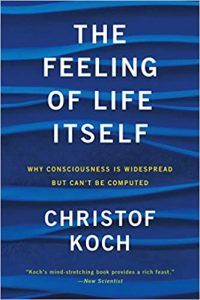

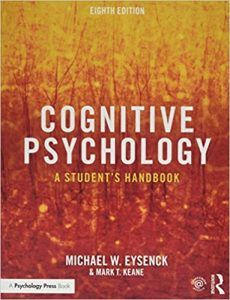
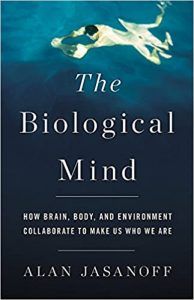
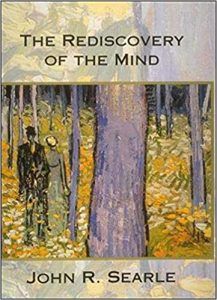
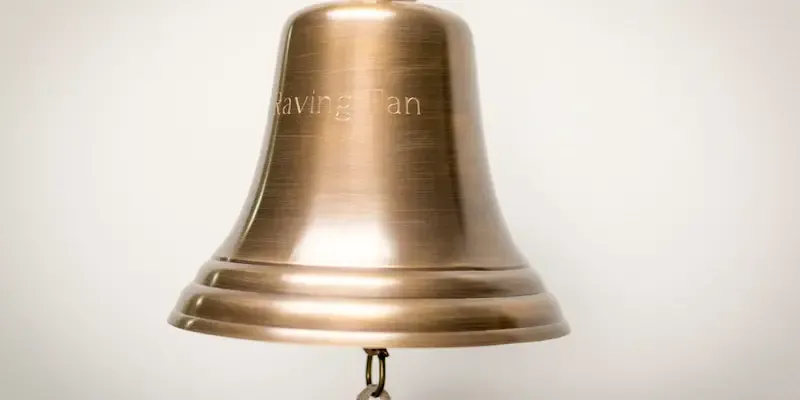


What our readers think
I think that simply dismissing Descartes’ thought experiment in ‘Meditations’ on the basis of brain scans might be doing it a great disservice. The point of his thought experiment was to cast doubt on the reliability of our perceptions and challenge preconceived beliefs. Given the brain’s penchant for constantly making predictions, some of which are inaccurate, misleading and deceptive, it points to the importance of perception reality monitoring, functioning of the prefrontal, medial temporal and parietal cortex, as well as the default mode network. Might not what we be experiencing in contemporary society the result of ‘evil demons’ or ‘deceiving gods’ who have or are learning to ‘hack’ into collective consciousness?
Very useful
Thanks
Its very usefull thank you very much ….
It’s becoming clear that with all the brain and consciousness theories out there, the proof will be in the pudding. By this I mean, can any particular theory be used to create a human adult level conscious machine. My bet is on the late Gerald Edelman’s Extended Theory of Neuronal Group Selection. The lead group in robotics based on this theory is the Neurorobotics Lab at UC at Irvine. Dr. Edelman distinguished between primary consciousness, which came first in evolution, and that humans share with other conscious animals, and higher order consciousness, which came to only humans with the acquisition of language. A machine with primary consciousness will probably have to come first.
The thing I find special about the TNGS is the Darwin series of automata created at the Neurosciences Institute by Dr. Edelman and his colleagues in the 1990’s and 2000’s. These machines perform in the real world, not in a restricted simulated world, and display convincing physical behavior indicative of higher psychological functions necessary for consciousness, such as perceptual categorization, memory, and learning. They are based on realistic models of the parts of the biological brain that the theory claims subserve these functions. The extended TNGS allows for the emergence of consciousness based only on further evolutionary development of the brain areas responsible for these functions, in a parsimonious way. No other research I’ve encountered is anywhere near as convincing.
I post because on almost every video and article about the brain and consciousness that I encounter, the attitude seems to be that we still know next to nothing about how the brain and consciousness work; that there’s lots of data but no unifying theory. I believe the extended TNGS is that theory. My motivation is to keep that theory in front of the public. And obviously, I consider it the route to a truly conscious machine, primary and higher-order.
My advice to people who want to create a conscious machine is to seriously ground themselves in the extended TNGS and the Darwin automata first, and proceed from there, by applying to Jeff Krichmar’s lab at UC Irvine, possibly. Dr. Edelman’s roadmap to a conscious machine is at https://arxiv.org/abs/2105.10461
Interesting, but there are many ways to Rome. My resent definition of consciousness: Anything that has negative entropy is driven by consciousness. AI is made by human consciousness. Crystals are formed by consciousness. Consciouensess both observe and initiate action. “Life” is equal to cosnciousness…..
See more info in published article: (PDF) A model of matter, mind, and consciousness | Olav Drageset – Academia.edu.webloc